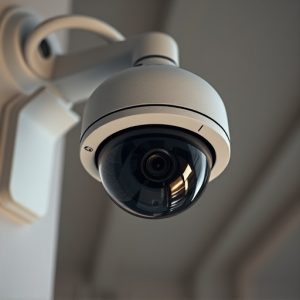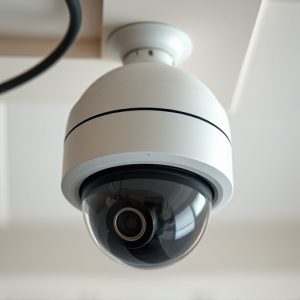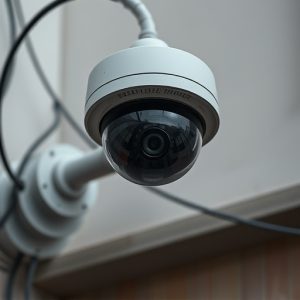Optimize Security: Mounting Heights for Dome vs Bullet Cameras
When choosing between fake dome and bullet cameras, consider your location and needs: dome for discr…….
When choosing between fake dome and bullet cameras, consider your location and needs: dome for discreet indoor use, bullet for outdoor visibility. Mounting height varies by camera type, field of view, and lighting. Ideal placement is eye-level or slightly above for clear footage. Outdoor cameras at 8-10 feet, indoors at 6-7 feet. Regular maintenance ensures optimal security from these devices. Fake dome cameras capture wide areas, bullet cameras target specific points.
“Enhance your home or business security with our comprehensive guide on fake security camera mounting heights. With a focus on dome and bullet cameras, we’ll explore how to maximize their effectiveness. Learn about the unique considerations for each type, from understanding their distinct designs to identifying the ideal mounting locations.
Discover the factors that dictate optimal height, ensuring your cameras deliver clear, comprehensive coverage. We provide practical tips for seamless installation, empowering you to fortify your security system with precision and expertise.”
- Understanding Fake Security Camera Types: Dome vs Bullet
- Factors Determining Optimal Mounting Height for Each Type
- Best Practices and Tips for Effective Installation and Placement
Understanding Fake Security Camera Types: Dome vs Bullet
Fake security cameras come in two primary types: dome and bullet. When considering which type is better for your needs, understanding their distinct features is crucial. Dome cameras are known for their compact, sleek design, often resembling a miniature dome or sphere. They are typically mounted on ceilings or walls, offering a wide field of view and discreet appearance. On the other hand, bullet cameras stand out due to their cylindrical shape and robust construction, giving them a more noticeable presence. Despite this, they provide excellent visibility, especially in outdoor settings, thanks to their high zoom capabilities and night vision features.
Choosing between a fake dome or bullet camera depends on your security requirements and installation environment. Dome cameras excel in indoor spaces where discretion is essential, while bullet cameras are ideal for exterior areas that demand enhanced visibility and resilience. Both types offer advanced technology, ensuring effective surveillance, but their physical designs cater to different preferences and specific application needs.
Factors Determining Optimal Mounting Height for Each Type
The optimal mounting height for security cameras varies based on several factors, and understanding these can greatly enhance the camera’s effectiveness. For instance, fake dome or bullet cameras, depending on their design and functionality, may require different heights to achieve ideal surveillance. A key consideration is the field of view; wider angles often dictate lower mounting to capture a broader area without overlapping footage. Conversely, telephoto lenses might benefit from higher positions to zoom in on specific targets.
Illumination levels and camera type also play a role. In well-lit areas, cameras can be mounted slightly lower due to improved image quality at closer ranges. However, for outdoor environments with varying light conditions or low-light scenarios, raising the camera height ensures adequate illumination of the target zone, enhancing visibility and potential deterrent effects.
Best Practices and Tips for Effective Installation and Placement
When installing a fake security camera, whether it’s a dome or bullet model, proper placement is key to enhancing home or business security. For optimal results, mount your camera at eye level or slightly above. This positioning ensures a clear and unobstructed view, allowing the camera to capture high-quality footage of potential intruders or suspicious activities. A height between 8 to 10 feet (2.4 to 3 meters) is generally recommended for outdoor locations, while indoor cameras can be placed at a lower range, typically around 6 to 7 feet (1.8 to 2.1 meters).
Additional best practices include ensuring the camera is securely mounted to prevent theft or tampering and positioning it in a location that provides adequate coverage of entry points and problem areas. For fake dome cameras, consider placing them on corners or edges where they can capture wide-angle views. Bullet cameras, on the other hand, are versatile and can be aimed directly at specific targets, making them ideal for close monitoring of sensitive areas. Regular maintenance, such as cleaning the lens and checking power connections, is also crucial to keep your security system functioning effectively.
When determining the optimal mounting height for your fake security camera, whether it’s a dome or bullet type, considering the specific features and advantages of each is key. Understanding the differences between these designs allows for better placement to maximize their effectiveness. By following best practices and leveraging the unique attributes of dome and bullet cameras, you can ensure a more secure environment with improved visibility and deterrence. Remember, the right mounting height can make all the difference in capturing clear footage and providing peace of mind.


